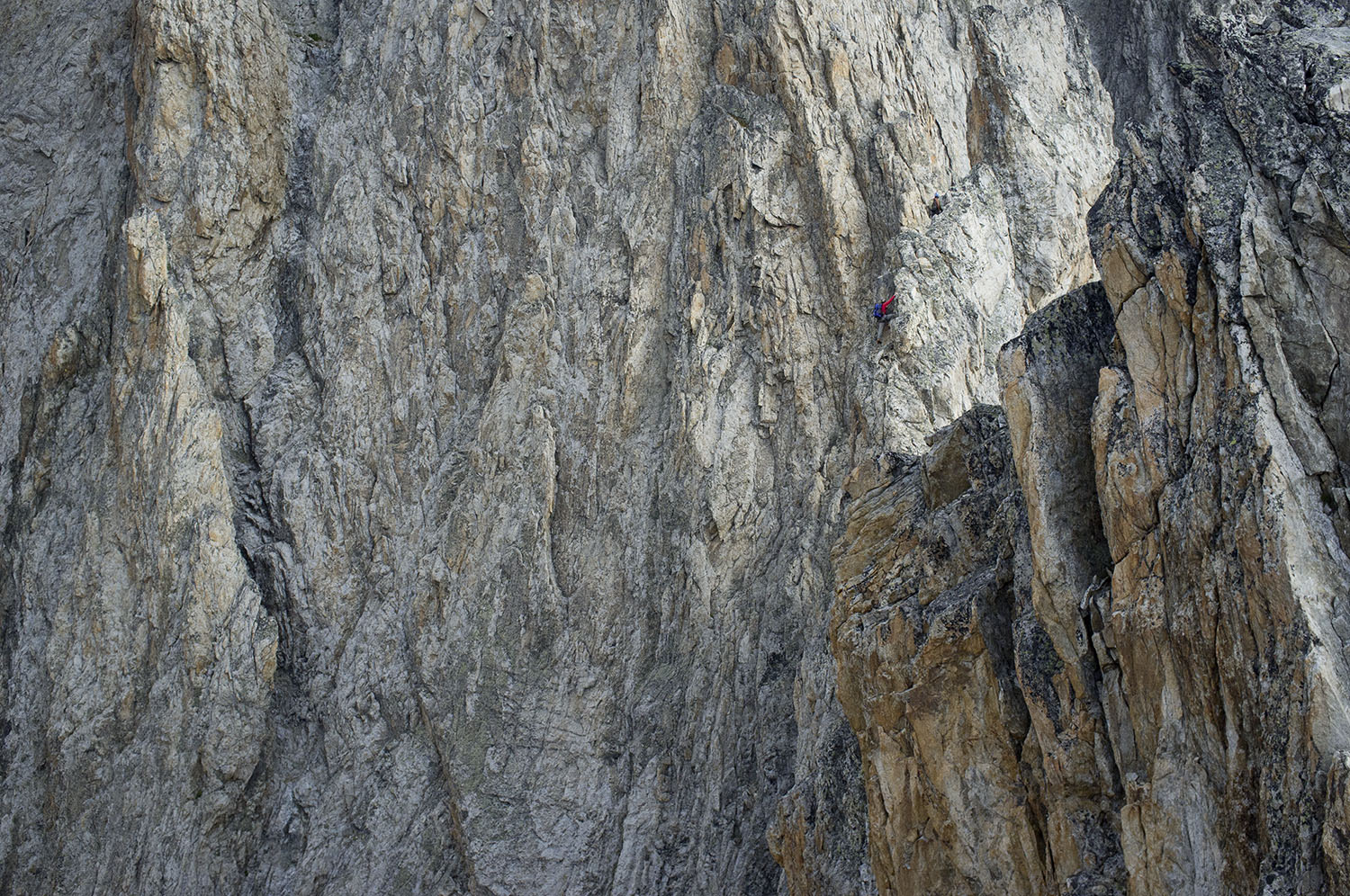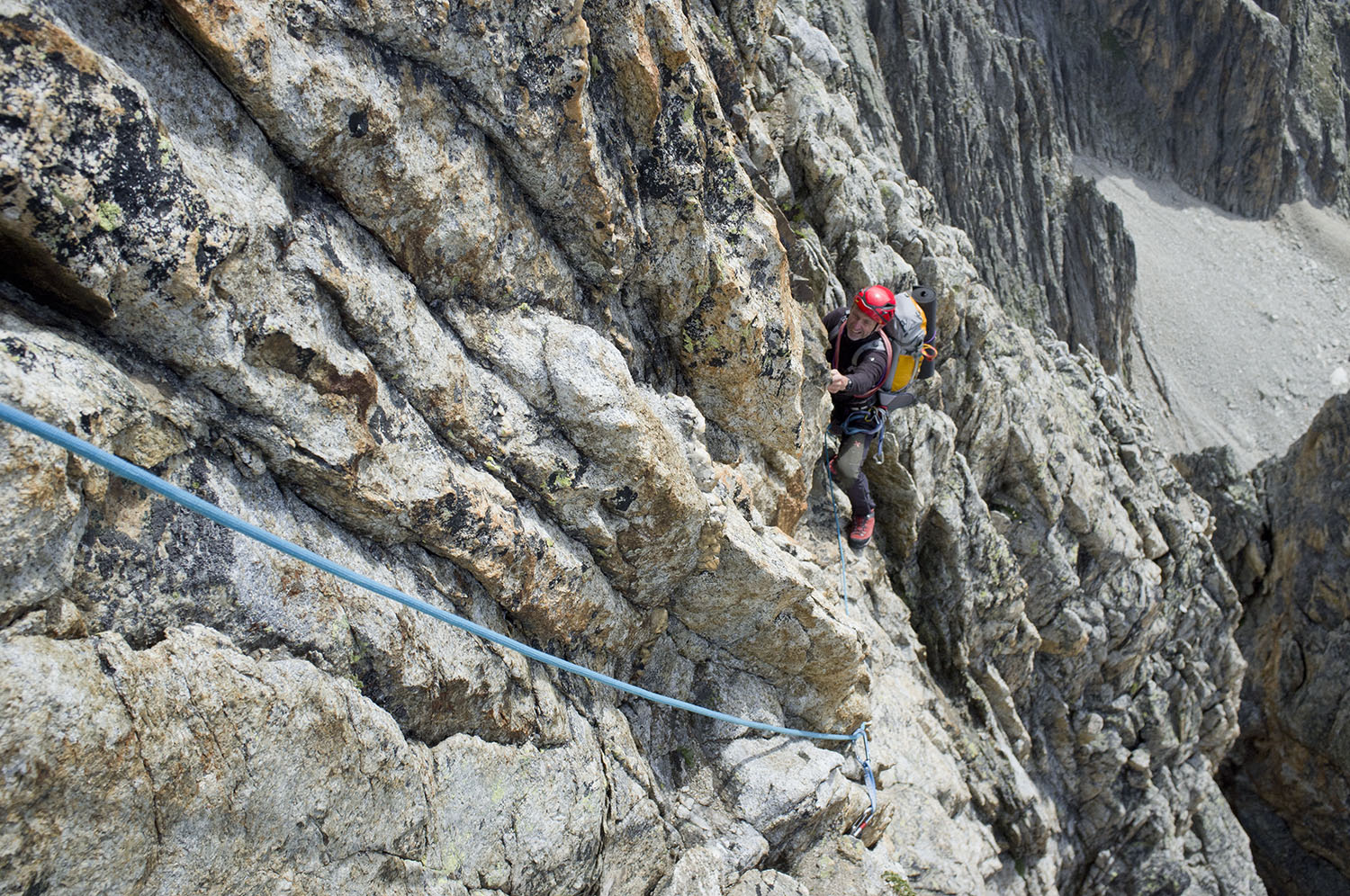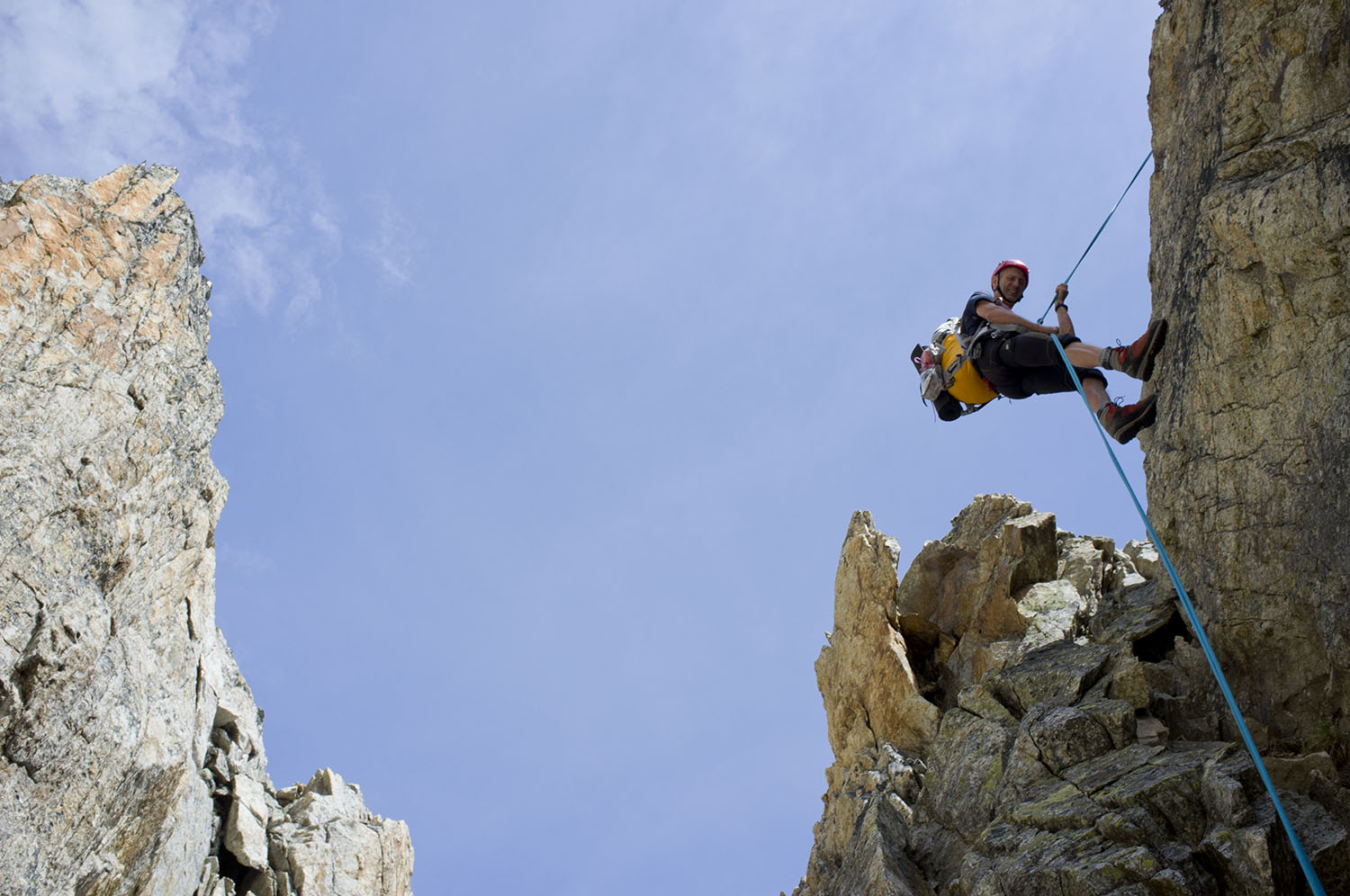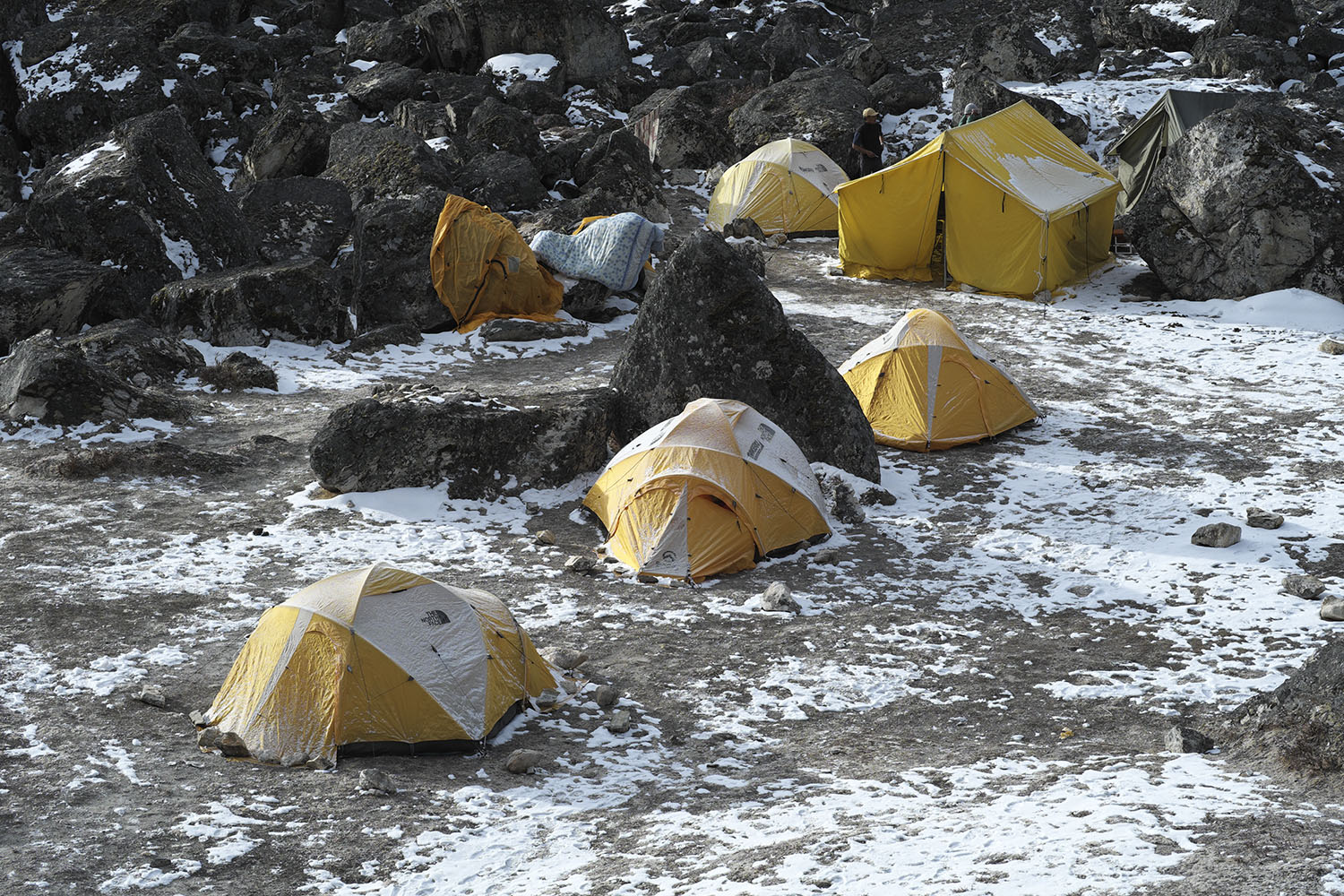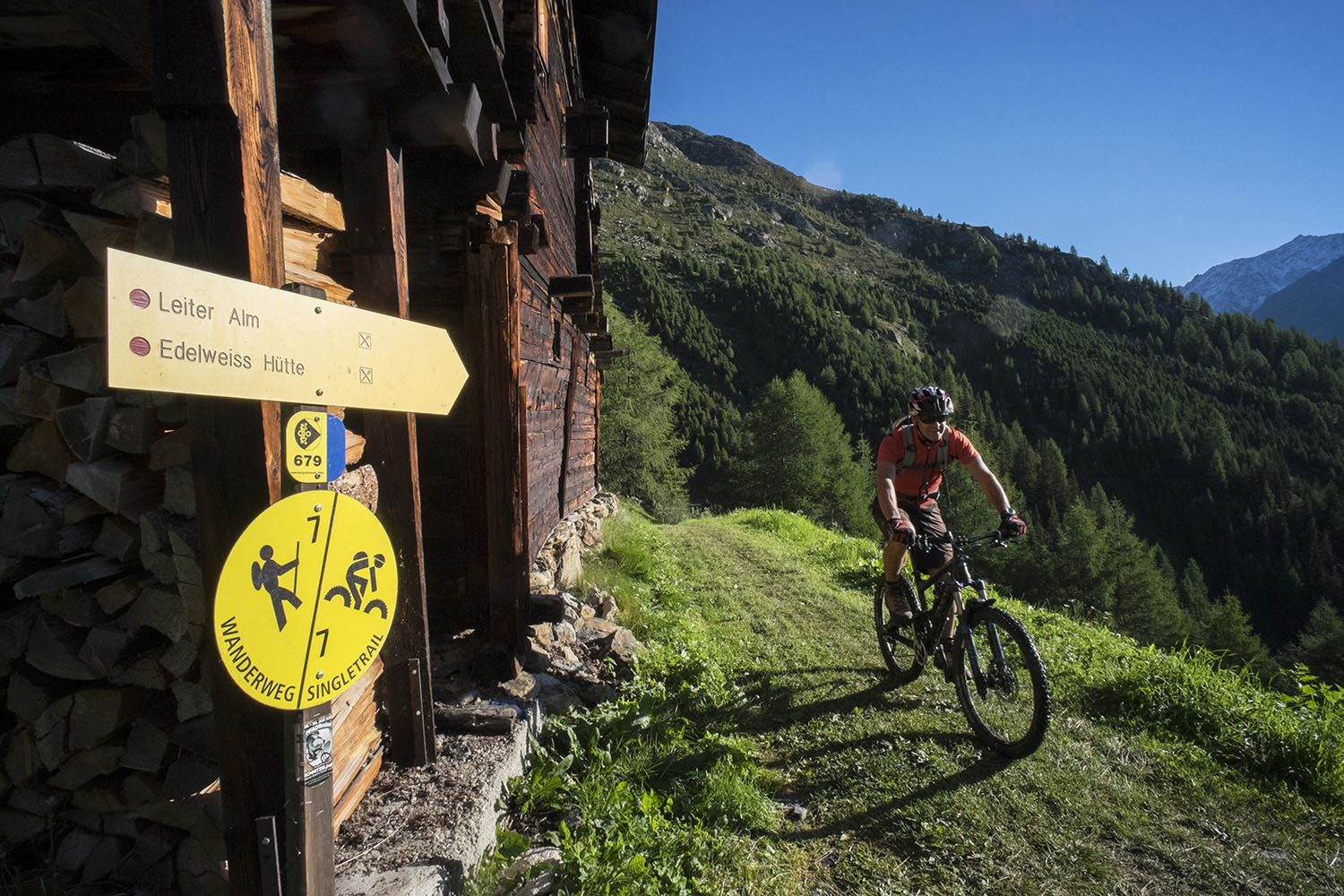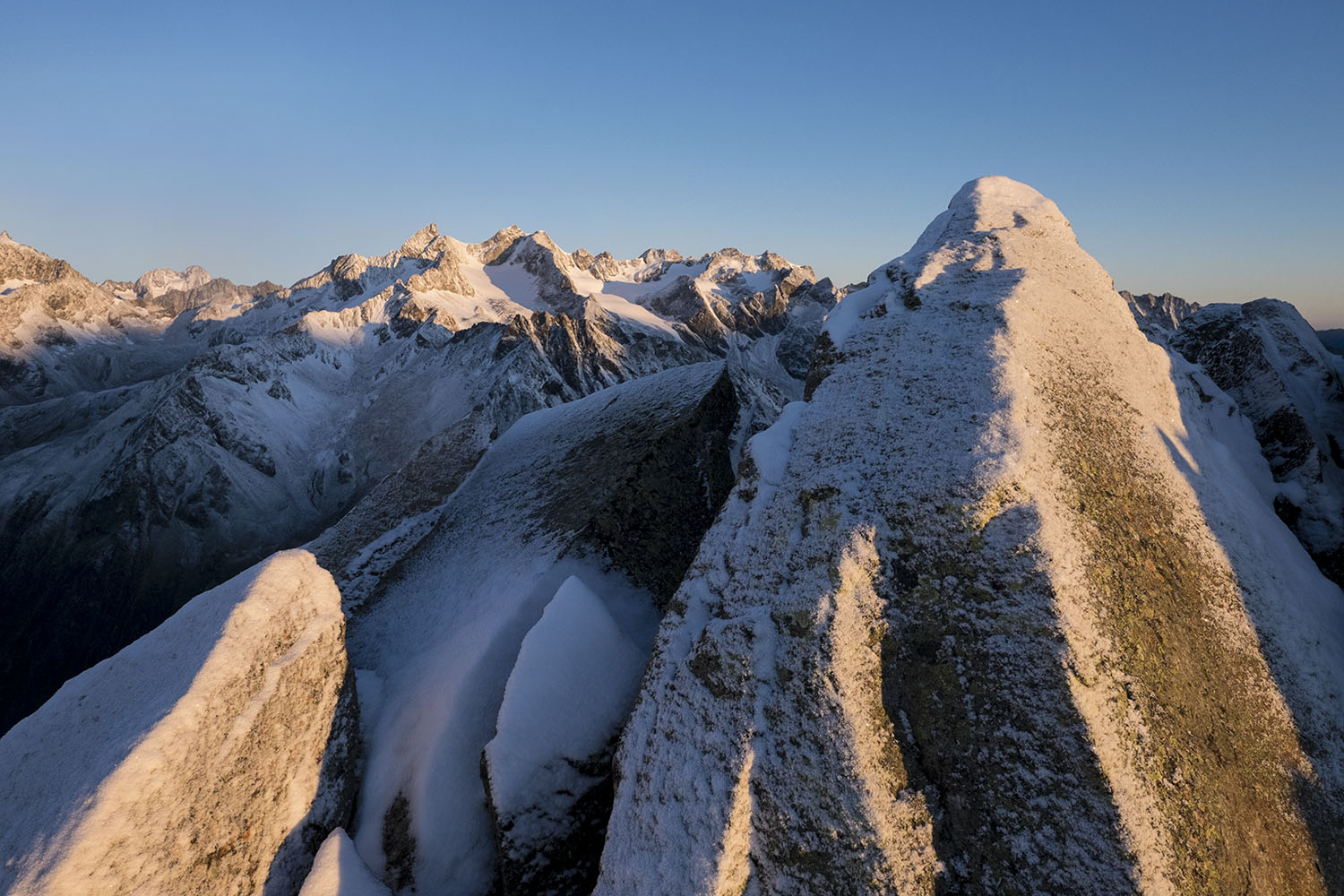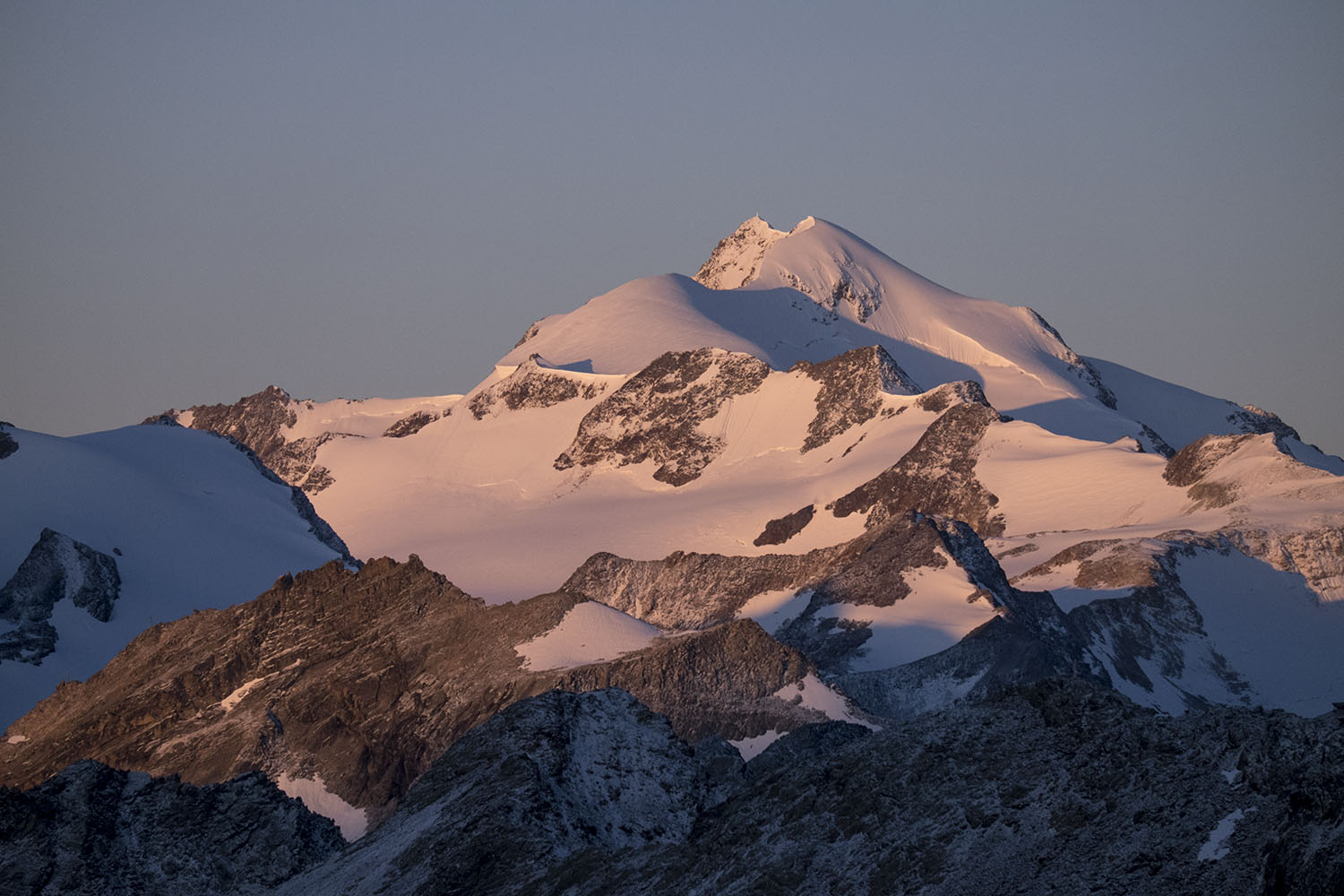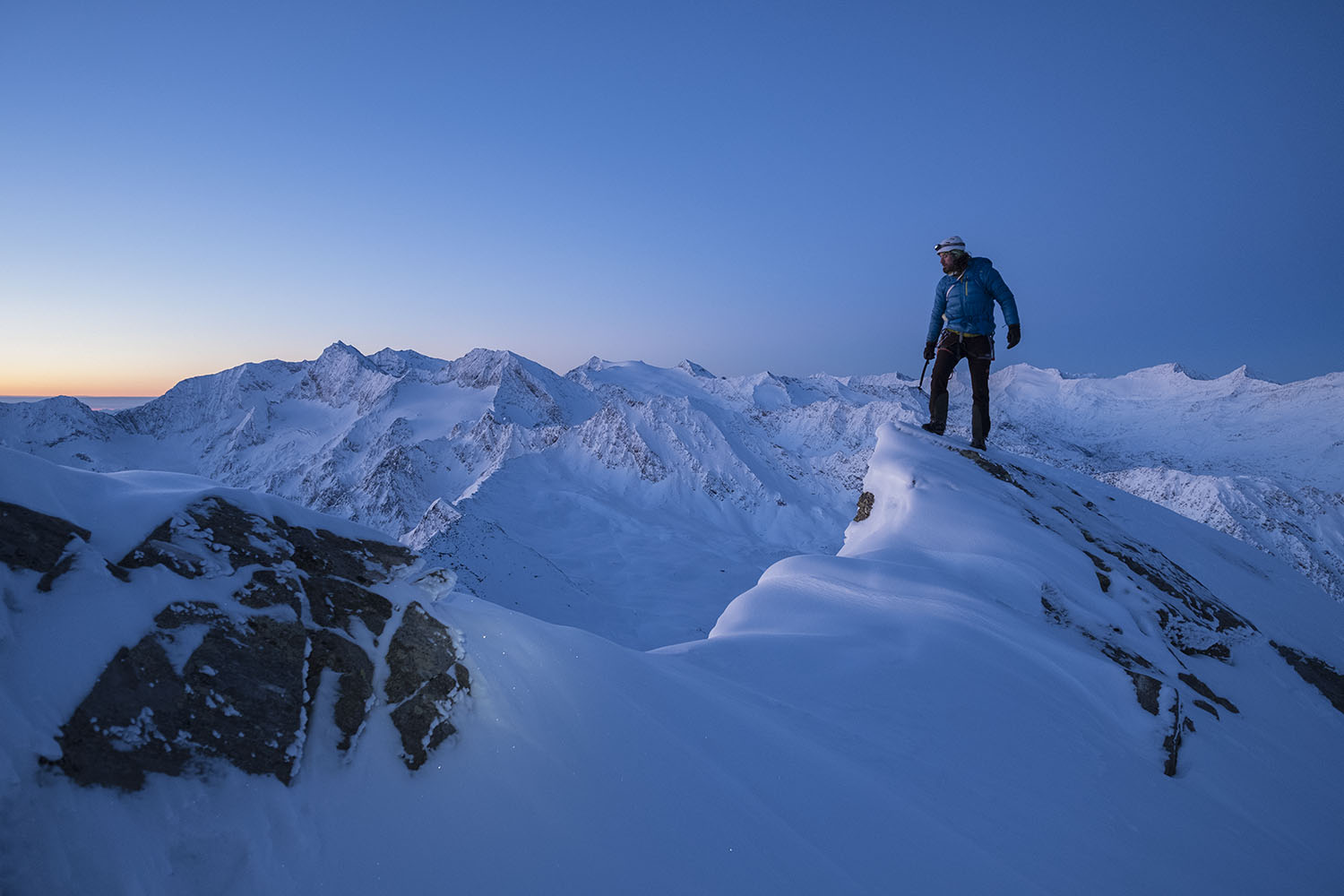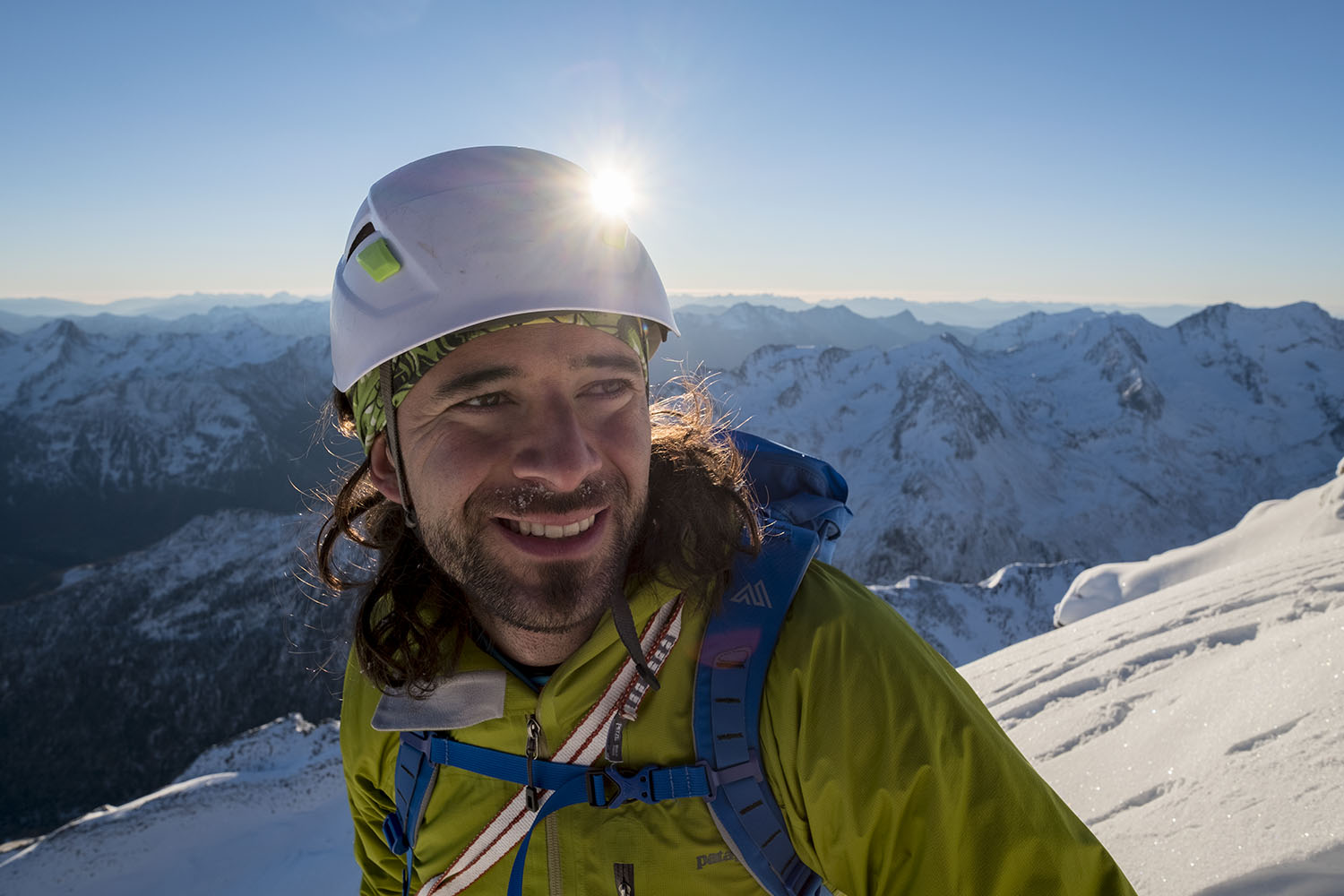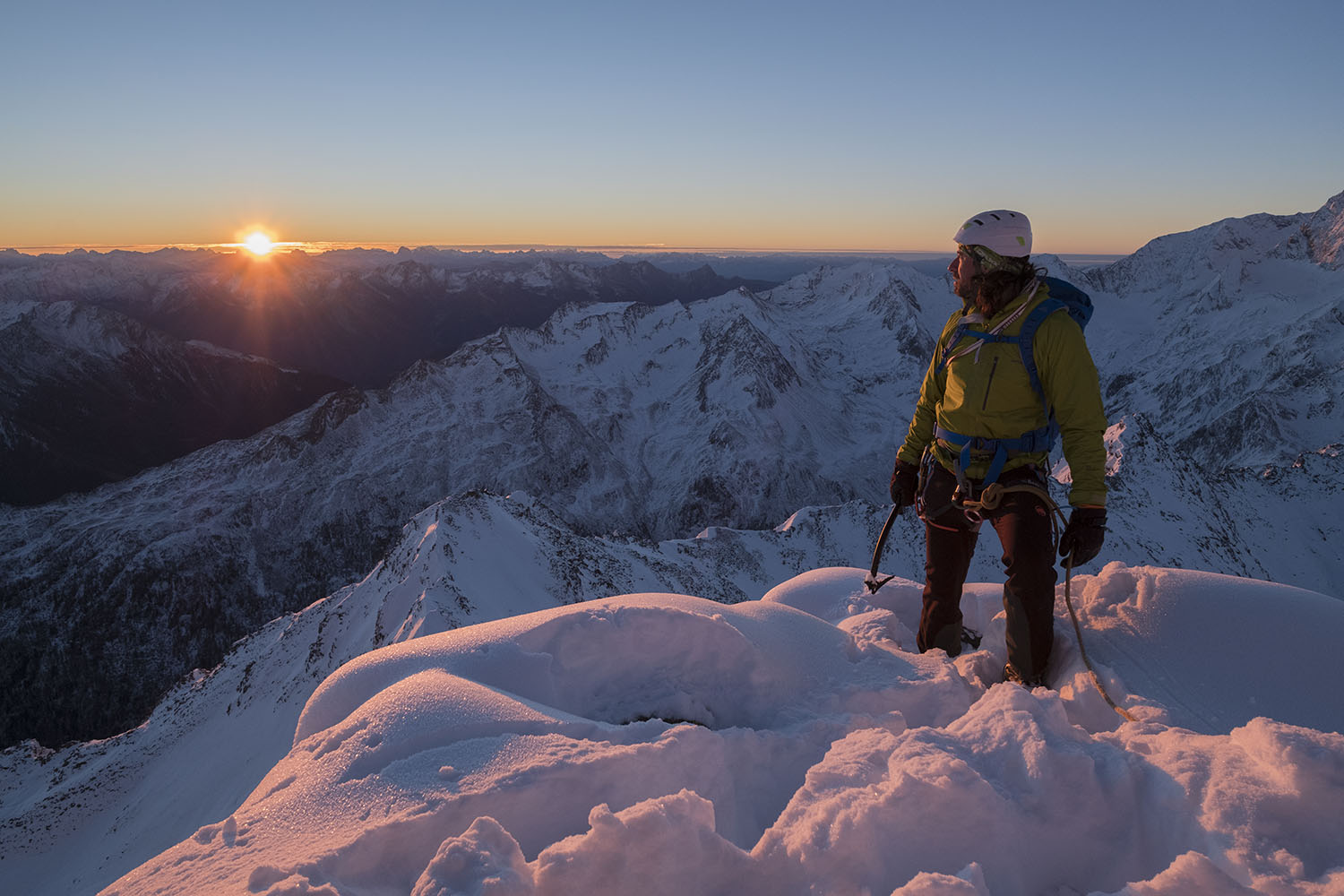
Curtain up for ....
Bernd Ritschel
Bernd Ritschel, born in 1963 in Wolfratshausen, Upper Bavaria, Germany, has been traveling the mountains and continents of this earth for 25 years. He has made many expeditions to the Himalayas, Alaska, the Andes and the Arctic to climb peaks more than 7000 meters high. The enthusiastic extreme mountaineer is now an internationally successful professional photographer. Long crossings such as the Skitransalp (2009) and the Dolomites Cross (2010) have made it possible for him to pursue his passion for the Alps more intensively than ever. He has been living in Kochel am See, Germany, with his wife Manuela and daughter Clarissa for many years.
“My camera has been my constant companion in the mountains for more than 25 years. At first, I mainly concentrating on documenting our tours and expeditions. This was followed by a phase of challenging, exciting promotional photography and commissions. However, ‘mountains in the light’ will continue to make up a large part of my photographic work and bind me closely to high Alpine mountaineering—authentic, emotional, back to the roots.”
More than 80 expeditions have taken him to 65 countries and almost all the mountains on earth. The results are captured in 20 books of photography, 5 textbooks/guides, numerous calendars and publications in almost all the major German-language magazines, among others.
His photos have been printed in many renowed magazines such as Geo, Stern, Geo Saison, Abenteuer & Reisen, ADAC specials and almost all the European skiing and mountaineering magazines. They have also been displayed at more than a dozen exhibitions throughout Central Europe. Bernd Ritschel is now one of Central Europe’s most famous mountain and documentary photographers.
Scene 1 -Spring 2011-
Let me cut a long story short. Until the spring of 2011 I used to lug a heavy DLSR about, including a standard zoom lens, even in long alpine climbing routes. However, I yearned to have an alternative and finally at the Photokina in 2010 the photography world began to change. Fujifilm was risking a revolution. For decades in the collective memory of photographers Fujifilm had mostly stood for “Velvia”, the legendary slide film. But now, every photographer who I spoke to had not only seen the X100 but had also bought it. Soon, all of us had one and we were thrilled about two things in particular: the optical hybrid viewfinder and the unbelievably good image quality.
For me the X100 came out just at the right time. After over 20 years as a mountaineer photographer my back was playing me up and my shoulders ached. In the summer of 2011 a good friend of mine, Franz Forster, and I wanted to climb the Stockhorn-Bietschhorn ridge, a project that is longer and more strenuous than the well-known Eiger North Face. I soon realized that my chances were pretty low if I took my big DSLR with me. Even though the X100 was limited with regard to focal length, I was absolutely certain that it would be ideal for this extremely challenging three-day project. Like madmen, we trained for months and started off at the beginning of August completely euphoric. But we failed all the same – due to the weather on the one hand but also due to a lack of toughness. Nevertheless, the story and the images were extremely important for the National Geographic project “Wilde Alpen” (Wild Alps) that I was working on at the time. The images appeared in both the book and the show.
That’s when I fell in love with this camera. With its minimalistic approach, it helps me see really good photographs – and helps me work on them till they’re perfect.
Scene 2 -January 2012-
Since the X100 had now become my steady companion in high altitude mountains I was fascinated in the winter of 2012 when the XPro1 was introduced as an entire “X System”. I was particularly interested because I had just been offered a dream assignment: I was to accompany Gerlinde Kaltenbrunner, the famous 8000 m mountaineer, and her husband Ralf Dujmovits on their trip to the Mount Everest region where I was to photograph them on Lobuche East, a 6119 m peak.
But at the same time I had serious doubts. For two of my other clients, Gore Tex and Lowa I had always used full frame cameras. Would they accept the much smaller APS-C frame size? Especially, as it was also an entirely new system.
In the end I made a very pragmatic decision. I simply took both systems with me. After all, I had a young, very fit assistant with me. And he had to have something to do ….
On location a few weeks later on a ridge above Namche Basar, I was feeling the effects of altitude and my lack of fitness. I was breathing heavily. In a small camera bag on the front of my body I was carrying an X-Pro1 with an XF18mm f2 R lens attached and the XF35mm f1.4 R and XF60mm f2.4 R Macro lenses. Although I was exhausted, I managed to get some good images. Speed was vital as we were now at 3700 m after hiking for hours and nobody wanted to hop around for the photographer. I was totally euphoric seeing how fast I was able to work with the X-Pro1. I rarely asked my assistant for the “big” camera. This scene was to be repeated for many days to come. With the X-Pro1 I succeeded in taking spontaneous and thus often excellent images and I only used the full frame camera during planned shootings.
I was really grateful for the “small” camera during the ascent up Lobuche. With difficult mixed climbing, snow-covered rock and very exposed terrain, I was simply glad that I had the lightweight Fujifilm camera with me.
My conclusion on quality: Irrelevant of whether the images were intended for a double-page spread in a catalogue or a magazine, everyone – clients and editors – were happy and satisfied with the quality of the images.
Scene 3 -Spring 2014-
Everything was fine. But there were even better things coming. The X-T1 had arrived. Naturally I had to try it out immediately. Why shouldn’t I do a quick bike and hike shooting tomorrow in the Ötztal Alps? Eight frames per second ought to be sufficient. The autofocus was new. I’d take Andi, an old friend and excellent mountain bike rider, with me to the Grieskogel mountain. We left at three in the morning, hiking initially in the light of our headlamps and then in the subtle light of the morning sunrise. On the summit ridge everything was covered in snow and ice – every boulder, every piece of rock and, unfortunately, the steel cables intended to help climbing on the hardest sections. As the sun rose I became heady while shooting images. We were surrounded by so many high peaks, including the 3700 m high Wildspitze in the south. I positioned Andi in every conceivable spot: on the ridge, on the summit, in the steep south face. Just an hour later I had shot all I wanted. After a quick snack we descended elated and full of energy.
Back in Hochsölden Andi changed his clothes and equipment. The next two hours were focused entirely on fast action sport. Andi rode on narrow single trails, on wide tracks in spectacular scenery, through airy larch woodlands and past weathered alm cabins. Yes, I was thrilled. The “new” camera is definitely fast enough.
Final scene -Autumn 2015-
The postman rang the bell at my house. The package I’d been waiting for had finally arrived. I ran into my office, opened the box and held something really “secret” in my hands: a prototype of the X-Pro2, which I was to test for a few days. It impressed me right away with its exquisite look and feel, professional design and virtually perfect technical specifications.
Quickly, I searched the internet and read the weather forecast for Obergurgl in Tyrol. In two days’ time there was a promise of a cloudless morning. I’d soon made my plans. I wanted to start shooting at sunrise on the summit ridge of the Wurmkogel mountain. That meant alpine climbing, an exposed ridge and emotions let loose on the summit. Then I made an important call to ask Tobi Heiss from Lenggries whether he had time for this shooting. His positive response was a relief as he is an excellent high-altitude mountaineer. On the next day we packed our mountaineering gear together, which was more than usual. Since we would be climbing on dangerous steep terrain, safety was a prime concern. We packed three ropes, ice climbing gear and crampons, slings and carabiners, ascenders, headlamps, down jackets and, in particular, warm boots for we would be working for hours in extremely chilly conditions up there.
In the evening we set off enthusiastically towards Obergurgl, the starting point for our planned photo session. Just before midnight we clambered into our warm down sleeping bags for a very short night. The alarm clock woke us at four in the morning. We quickly got ready drinking just a few sips of hot tea from our thermos flasks and putting on warm mountain clothing and our headlamps. Off we went. As planned, we reached the summit ridge of the Wurmkogel at 3000 m just as the sun started to rise. My small pocket thermometer indicated minus 18C. Despite chilly fingers we managed to set up belays and fixed our ropes. Shortly afterwards, I enjoyed hearing the shutter working in the X-Pro2. On this morning I used only three prime lenses: the Fujinon XF14mm f2.8 R, the XF23mm f1.4 R and the XF56mm f1.2 R.
Then I shot over 800 images, changed the lenses many times, inserted new batteries and drank some hot tea. And all that in fantastic light conditions. A thrilling experience.
In my opinion the new camera is an ingenious and absolutely professional tool.
Last but not least -March/April 2016-
When these words appear online in the Fujifilm X-Blog, I’ll already be in the Red Rocks in Nevada together with my assistant and mountaineering partner, Christain Speer. First, we’ll spend about a week working on a “Making of” video and taking images for my new book project. However, it’s the few spare days at the end of the trip that we are really looking forward to – when we can go climbing, just the two of us and just for fun. We’ll leave the big camera equipment in a hotel and I’ll just take the X100T with me. And then two passions can be fulfilled: climbing and photography.
Finally, I’d like to express my thanks to Fujifilm. First, for their courage to take the risk of designing such an innovative, new system and, secondly, for the absolutely professional quality of their products and their support for us photographers, which can hardly be topped. Keep it up!!















































